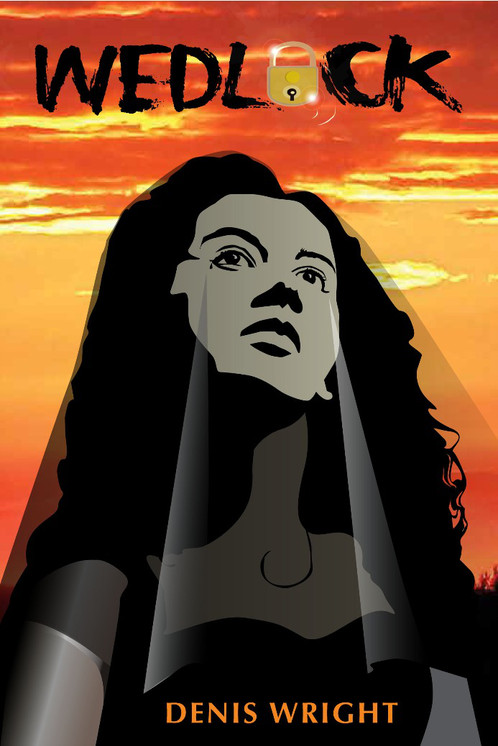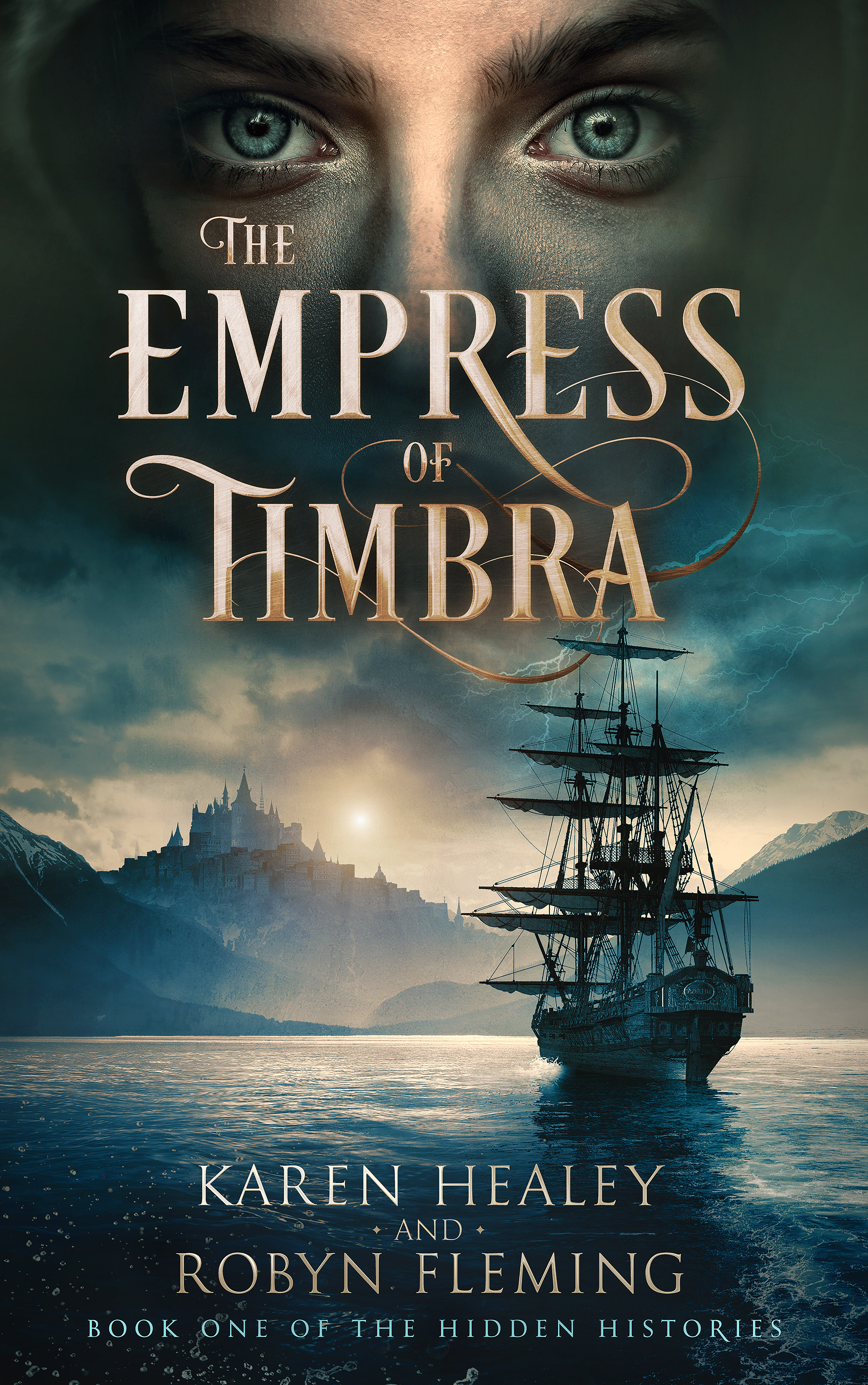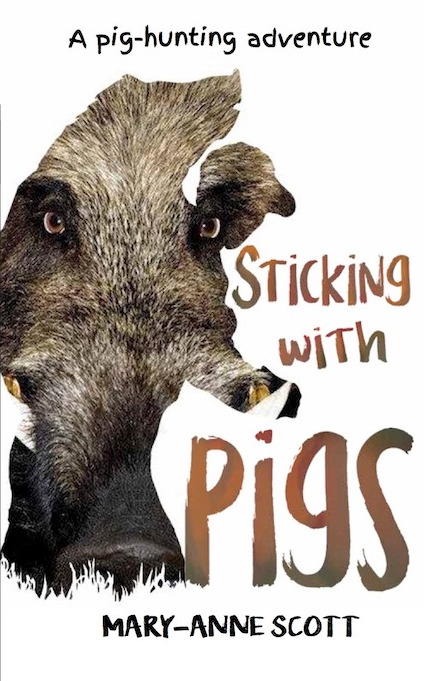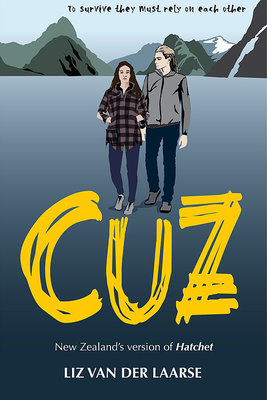This set of reviews includes everything from kidnapping to faraway kingdoms, pig-hunting to the wilds of Fiordland. Three of the books reviewed are by OneTree House, who just this week won a prestigious award at Bologna Children’s Book Fair. The first two reviews, of Wedlock and The Empress of Timbra, are by Alisha Tyson; Sarah Forster reviews Sticking with Pigs and Cuz.

Wedlock, by Denis Wright’Thick suffocating fog holds me down … a minute or an hour or a lifetime later I try again and manage to open my eyes … where am I?’
Wedlock is a story about kidnap and life inside a cult. If you don’t have the stomach for that, pass it on to someone else, because it is a worthwhile read from Denis Wright, the New Zealand author of Violence 101, published by new publisher OneTree House. Wright is a high school teacher in Wellington, so his teen dialogue is deftly written. He captures well that horrible point for a young woman where you hit puberty and life gets a whole lot more annoying. Lucy is only 15, and yet she’s effectively mother to her drop-kick father and caretaker to her grandfather, whose health is deteriorating. If that wasn’t enough, she must also defend herself, like an ultimate street-fighter, whenever a man gets too close; they clutch at her body as if it is their right. Other girls her age are jealous of her figure, but they don’t get it. Because of the way she looks, Lucy has had to realise too young that she is now an object for her dad’s friends, bullies at school, and even strangers in cars to covet. Her life is exhausting. It’s no wonder the book opens with her wondering if she can turn away and never come home again.
Because of the way she looks, Lucy has had to realise too young that she is now an object for her dad’s friends, bullies at school, and even strangers in cars to covet. Her life is exhausting.
The leader of Lucy’s kidnappers is known as Master by his cult followers but he allows Lucy to call him Isaiah – he is the Prophet Isaiah incarnate, apparently. The prayer and worship elements in the book are good examples of spiritual manipulation. Lucy’s family isn’t at all religious so this is her first experience of zealous worship and it’s hard for Lucy to separate the soothing meditative experience she is having in prayer from the nonsense they are praying about.This story promises a lot with Lucy’s pragmatic attitude, yet it involves a lot of men saving her. They treat her like a sack of potatoes to shift in and out of danger. It was disappointing that she didn’t have more agency, but upon reflection when you consider how tiring Lucy’s life has been up until this point, it makes sense that she might not have the energy to help herself. On its own this detail of the story isn’t a problem, but within the context of damsel-in-distress books, movies and TV shows, Lucy’s lack of power was depressing and I wanted more from her as a character.There was some simplification of what was happening to Lucy psychologically, which flattened out the narrative, making it less of a realist book and more of a Taken-esque thriller. Despite this, the story is gripping, chapters are succinct and the book feels stripped of all fat. This is a good read for a teen who might be put off by complicated prose; the language is straightforward and engaging. It’s a book that doesn’t mess around and gets straight to the action.
Reviewed by Alisha Tyson

The Empress of Timbra, by Karen Healey and Robyn Fleming
‘The first time I met my brother, I didn’t know he was my brother.’
Karen Healey in collaboration with Robyn Fleming, has self-published the high-fantasy adventure Empress of Timbra, Book One in the Hidden Histories e-book series. This book is immersive and enchanting. The world-building is on par with stories like The Princess Bride and Harry Potter. If you have a teen in your life who needs another world to visit, with magic, horned horses, pirates, and castles, give them The Empress of Timbra and watch them disappear within the book for weeks on end.
The story feels cohesive and hangs together well, and unlike many books with co-writers there is no sense of two authorial voices. In the blog ‘Whatever’, the authors say on the experience of editing, ‘The biggest joy – and biggest problem – of having a co-writer is that you can easily reinforce each other’s ideas.’ Although this made the editing process more difficult for them, there is no evidence of it in the text.
The story feels cohesive and hangs together well, and unlike many books with co-writers there is no sense oftwo authorial voices.
At 14, a poor fishing boy known as Taver has just witnessed the man who raised him die, and is rattled to learn his biological father is a baron living in a castle far away. Taver also learns that he has an 11-year-old half-sister called Elaku. Elaku is the baron’s daughter, and her mother is the Empress’ witch. Elaku lives the life of a noble, while Taver trains to become a blacksmith to support his mother. Their situations couldn’t be more different.
This story is a dual narrative shared by Taver and Elaku. The narrative is slow to begin, with just Taver’s perspective, which is limited to action and survival. In a small fishing village, Taver spends each day scrounging together enough food to live on. Desperate, his mother moves them to the castle to meet the baron and live in the servants’ quarters. Elaku and Taver find each other as total strangers hiding beneath a staircase. Their perspectives on the meeting overlap. We see Elaku’s thoughts and then Taver’s version. We get to experience Taver regret words Elaku thought he meant seriously. The overlapping of moments in this book is a lovely touch.
Elaku’s perspective is welcome because it builds the world. She has the ability to make up stories and live in the stories she was told about Timbra. Suddenly there is magic and a whole complicated history that Elaku tells as either a romance or an adventure. Elaku’s mother, the Empress’ witch, warns her that, ‘Stories have a way of smoothing out the truth.’ Because of this, Elaku’s perspective might not be trustworthy, as she is always looking for a way to see people in her life as heroes, when it is more complex than that.
Elaku’s loneliness is what draws Taver to her at first, but soon their days are out of kilter without having seen each other over lunch. Their burgeoning sibling relationship is beautifully executed.
Their burgeoning sibling relationship is beautifully executed.
The politics of Timbra are a warped mirror for our civil rights that are continually fought for worldwide. Elaku’s mother, the witch, is not married to the baron, because women cannot own property when they wed. She is hoping for those laws to be changed in her lifetime.
Taver wants to step away as far as possible from the politics of Timbra, which are complicated, full of usurpation and secrets. However, his father and half-sister keep drawing him in. The history of magic in Taver’s bloodline means he might not be able to live a humble life, safe and far away from war and darkness. He wishes the most he had to deal with were the bullies at the smithy.
Elaku is privy to so many cloak-and-dagger meetings that she forgets what she can tell her brother and what she must keep to herself. The tension from classified magic, embellished history, and the terrible truth of what really happened, makes the story difficult to put down and a joy to pick up. This story is suited to a teen who likes a book with rich description and history. The Empress of Timbra is a masterpiece of escapism.
Reviewed by Alisha Tyson

The empress of timbra
by Karen Healey and Robyn Fleming
Published by Karen Healey
RRP US$5.00 (e-book)
Sticking with Pigs by Mary-Anne Scott
Fourteen-year-old Wolf has been feeling invisible since his younger brother Davey was diagnosed with Addison’s Disease. One evening, his uncle Jem comes by with some duck meat from his latest duck-shooting trip. He gets Wolf’s help to pluck and prepare the ducks for the freezer, before coming in for dinner. During dinner, he gets to telling a story about the rhythm of the hunt, and Wolf – almost accidentally – asks to go along next time he goes out.
His parents are protective and cautious, but once Jem agrees to not taking guns, they come around and help Wolf to prepare for the day. It was good to see the concept of needing to train to go on a tramp and hunt, for those unused to it. Wolf spends a month tramping the streets with a gradually heavy pack, and Davey occasionally comes along on his bike. On the final training day, Davey is hit by a reversing car, and has to be injected with adrenaline and taken away in an ambulance. Wolf is forced to leave on his hunt wrecked with guilt, promising Davey the tusks of the pig he hopes to kill.
Wolf is forced to leave on his hunt wrecked with guilt, promising Davey the tusks of the pig he hopes to kill.
When Wolf gets to Jem’s farm, he is surprised to see a girl his own age – Jem’s step-daughter. They seemingly build a relationship of sorts very swiftly (mostly based on him wanting to impress her) before the hunt begins.
The book has many pro-hunting adages like this one: ‘Once you’ve been involved in the food prep like this, you’ll never take your tucker for granted again.’ But, to the author’s credit, at no point does the sport feel glamorous, nor the death of the animal gratuitous. The way in which they hunt is ecologically sound, and we frequently see during the tramp, the damage that the (introduced) wild pig they are hunting has done to the native bush.
The tramp doesn’t go smoothly, and one dog is injured by the time they catch their pig. Then comes the ‘grittiest’ part of the book – Wolf helping to gut, then carry the pig out. ‘Wolf led the way… he tried not to think about the carcass on his back, but the army of lice that infested it seemed determined to shift house onto Wolf.’ Mary-Anne has a talent with descriptive language! I dare you not to itch.
At its heart, this is a redemption tale about one young teenager’s journey towards figuring out what he is made of. Mary-Anne has a talent for writing irritating teen male characters so well that you still want to read their stories.
Mary-Anne has a talent for writing irritating teen male characters so well that you still want to read their stories.
The aspect of the story that made me the most uneasy was the way in which Wolf’s relationship with Trina was portrayed and developed. Trina is a tough farm girl, who knows her way around the bush and doesn’t need anybody to help her, yet instinctively, and ridiculously even by his own (interior) admission, Wolf is trying to protect her – from carrying too much, from having to walk out. I wanted to yell ‘I don’t need your chivalry’ at him.
Wolf’s time with Jem in the bush makes him question his old self in ways he’d never been forced to in the past. It’s a little bit Hunt for the Wilderpeople – when you need to rely on yourself, you need to know yourself. Jem is not so much a voice of wisdom as a voice for tolerance, and toughness – something Wolf hasn’t required in the cushioned modern world.
I would recommend this for teenagers who are interested in the hunting lifestyle – certainly instead of a Barry Crump story with its nasty toxic masculinity. There is no doubt there is a fair bit of adrenaline involved in hunting (for females who hunt as well), but Mary-Anne has given us a spot-on portrayal of a teenager who is still learning his space in the world, making this more than just another yarn. Recommended for age 12+.
Reviewed by Sarah Forster

Cuz, by Liz van der Laarse
First up, let me just say that I am a Pākehā woman reviewing a book that includes references and some usage of tikanga Māori, written by another Pākehā woman. My knowledge of tikanga Māori is not extensive. With that in mind, I am unable to review the veracity of the tikanga or reo contained in this book, and will concentrate mainly on how well Van der Laarse has told the story of River and Huia.
Something which The Sapling has published on in the past is the idea of other cultures presuming to tell traditional stories, of colonised people. While this is by no means a traditional story, tikanga Māori is explicitly a Māori worldview, and I’d like to suggest anybody who is interested in where the boundaries for creators lie, read this article by Nicole Hawkins in The Spinoff.
The story opens at Fox River, where River is being dumped by big waves on an autumn day. He returns home from the beach to find his uncle Tau and cousin Huia visiting, en route home from Westport after checking out a new engine for his uncle’s trawler. River feels insecure around Huia because she has more knowledge of tikanga Māori than he does – his father left them when he was young, and his mum is Pākehā, while Huia lives near and spends time with their Nan on the marae in Riverton.
River agrees to help crew for Tau alongside Huia, helping him to bring the trawler up to Westport for an engine change. I felt there was a chapter missing between chapter one and two, as we find River embarking rather suddenly on a boat trip with his uncle and cousin. They are out in the ocean for one night together, before disaster strikes: there is a gas leak which sees Tau and the boat explode after Tau lights a cigarette. This would have been less convenient-plot-point-seeming if he’d been shown smoking earlier in the book! However, both Huia and River survive, and make it to land which isn’t too far away, but Tau is missing.
‘They stood at the head of the beach hugging themselves tightly against the wind. A cloud of smoke hung over the charred hull of the trawler. Remnants of Whetu littered the beach and the rocks below the headlands.’
They are stranded in Fiordland, and the only thing they can think to do is head for their waka. Huia says, ‘If we walk toward our waka, our tupuna will watch over us.’ So they embark on an epic journey over mountains and through bush to reach their home.
Van der Laarse knows her bushlore, and appears to understand the traditional uses of many of Aotearoa’s native plants, knowledge she instils in Huia. Huia is the advisor on what to eat in the bush, and River is the gatherer after Huia breaks some ribs falling early in the journey. Their dialogue is realistic, peppered with te reo and colloquialisms which proved that van der Laarse knows her audience (she is a teacher, so no surprises there). The book is fast-paced and very readable, and their journey passes quickly, with one of the main drivers of action being where their next meal might come from.
Their dialogue is realistic, peppered with te reo and colloquialisms which proved that van der Laarse knows her audience (she is a teacher, so no surprises there).
The satisfaction that River derives from learning bushlore and gaining a better understanding of tikanga Māori from his cousin, as well as their shared experience, soon sees him treating her with more respect than he has earlier on in the story. He stops reacting before thinking as he understands they need to be equal in this situation, if either of them is to have a chance of surviving. As a reader, I enjoyed watching this happen – the edges left by River’s feeling of abandonment by his father are smoothed out. And their relationship becomes close, to the point that River has trouble considering his future without being around Huia, after all they have been through.
I would like to have had a clearer sense of time passing while the teens are lost, but this didn’t affect my enjoyment of Cuz. I am not a tramper, but Huia and River’s uses of Aotearoa’s natural resources were so detailed that I would like to speak with an expert about them, and perhaps try a tramp using them. Though I think I might give weka-eating a miss.
I was disappointed by the publisher’s choice not to macronise the te reo text in this book, and my positive review relies on my good faith that Van der Laarse consulted widely with the iwi whose tikanga she made such broad use of in this book.
With that noted, I’d recommend this for anyone who enjoys reading adventure stories. Ages 11+, and reluctant readers are also likely to be drawn in.
Reviewed by Sarah Forster





